Featured image credit: Firefly
Launch Window | September 03, 2021 – 01:00-05:00 UTC September 02, 2021 – 18:00-22:00 PDT |
|---|---|
Mission Name | FLTA001, DREAM, Firefly’s first mission |
Launch Provider | Firefly Aerospace |
Customer | There are several customers from all around the world, see below for a full list |
Rocket | Alpha |
Launch Location | SLC-2, Vandenberg Space Force Base, USA |
Payload mass | 92.115 kg (~203 lb) |
Where are the satellites going? | To a 300 km low Earth orbit (LEO) at 137° inclination |
Will they be attempting to recover the first stage? | No, this is not a capability of Alpha |
Where will the first stage land? | The Pacific Ocean |
Will they be attempting to recover the fairings? | No, this is not a capability of Alpha |
Are these fairings new? | Yes |
How’s the weather looking? | TBD |
This will be the: | – 1st launch of Alpha – 1st launch for Firefly – 2nd launch from Vandenberg in 2021 – 85th orbital launch attempt of 2021 |
Where to watch | Join Tim Dodd, the Everyday Astronaut, as he and Firefly will go live at approximately T-60 minutes with the official livestream; come ask questions and join the conversation live! |
What Does All This Mean?
Firefly Aerospace is the next private rocket company that aims to achieve orbit with its brand new Alpha launch vehicle. Alpha will lift off from Vandenberg Space Force Base, USA, and targets a 300 km low Earth orbit (LEO) in which it will deploy multiple payloads. On board of the FLTA001 DREAM mission will be Firefly’s DREAM payloads, which consist of technical and non-technical payloads, ranging from CubeSats and DNA samples, to pictures of loved ones.

Firefly Aerospace
Originally founded as Firefly Space Systems in 2014, Firefly planned to develop a 400 kg to orbit Alpha launch vehicle. After winning several contracts, including a NASA launch contract, Firefly was forced to shut down in late 2016 after a large investor dropped out of their Series A funding round due to financial impacts from BREXIT. After Firefly declared bankruptcy in early 2017, Max Polyakov’s Noosphere Ventures purchased all assets of Firefly Space Systems and restarted the company in May of 2017 as Firefly Aerospace, fully funding the development of the newly designed 1,000 kg to orbit Alpha. Four years later, Firefly now has over 475 employees, has won a $93.3M NASA contract to go to the Moon in 2023, recently completed a Series A funding round at over a $1B valuation and is on track to become a new member in the club of orbit-capable launch providers. This rollercoaster of a journey is represented by the phoenix rising out of the flames, visible on both Firefly’s FLT 001 DREAM mission patch, as well as at the bottom of the Alpha Flight 1 launch vehicle.
DREAM
Back in 2019, Firefly announced its Dedicated Research & Education Accelerator Mission or DREAM. Along with the Firefly Academy (Firefly’s non-profit STEM organization), participation in the Base11 Challenge, and the Firefly International Rocket Event (FIRE), DREAM is Firefly’s biggest undertaking with the aim to inspire young people to pursue STEM education. With DREAM, Firefly has opened up space for literally everyone. They asked educational institutions, start up space entrepreneurs, and other institutions that have big space dreams including private individuals to tell them about their DREAMs and what they would like to send to space.
Non-Technical Payloads
There are many non-technical payloads flying on the inaugural flight of Firefly’s Alpha rocket. These payloads range from personal items, to books, to other random items that have meaning to their respective organisations. These payloads come from many different entities around the world. In addition to the payloads discussed in depth below, are payloads from Anderson High School Robotics Program, Madison West Rocket Club, and AstroGrams.
Liam Fjellstedt – Photo
Liam Fjellstedt is a 21 year old dreamer of all things space who has been collecting space artifacts from various space programs for years. After growing up in the United Arab Emirates, he moved to Sweden and New Zealand. At the time, there were no space initiatives in those locations so Liam knew that getting involved with space exploration was going to prove difficult.
Therefore, he decided to start collecting space related objects such as pieces of the Apollo 12 heat shield, as well as fragments of Skylab and the Mir Space Station. The list goes on and on, but safe to say is that Liam truly loves spaceflight.

When he found out that he would be able to send personal items to space, he immediately jumped up and started thinking about what he could send. He described his emotions as, “I remember being so excited that I was chosen and so happy to be a part of such a wonderful endeavor! I believe the future of Spaceflight is for us all and I am hoping to be able to use the items I have to educate the youth about the importance of space for all mankind.” Liam truly has the best interest of the future in his heart.
After much consideration, Liam chose to send a picture of himself surrounded by family members and friends with their signatures on the inaugural flight of Firefly’s Alpha. As a nice touch, he decided to attach a piece of his hair to the back. That way a small piece of him could go to space, one of his many dreams.
Henry the Astronaut – Book
Author Jonna Ocampo, who runs the self-funded non-profit organization CD-SEAS, has written a children’s book titled Henry the Astronaut, which she has chosen to send on the inaugural launch of Firefly’s Alpha rocket. One of Jonna’s main goals is to provide an easy to learn source for children so that they can increase their knowledge of space at an early age.
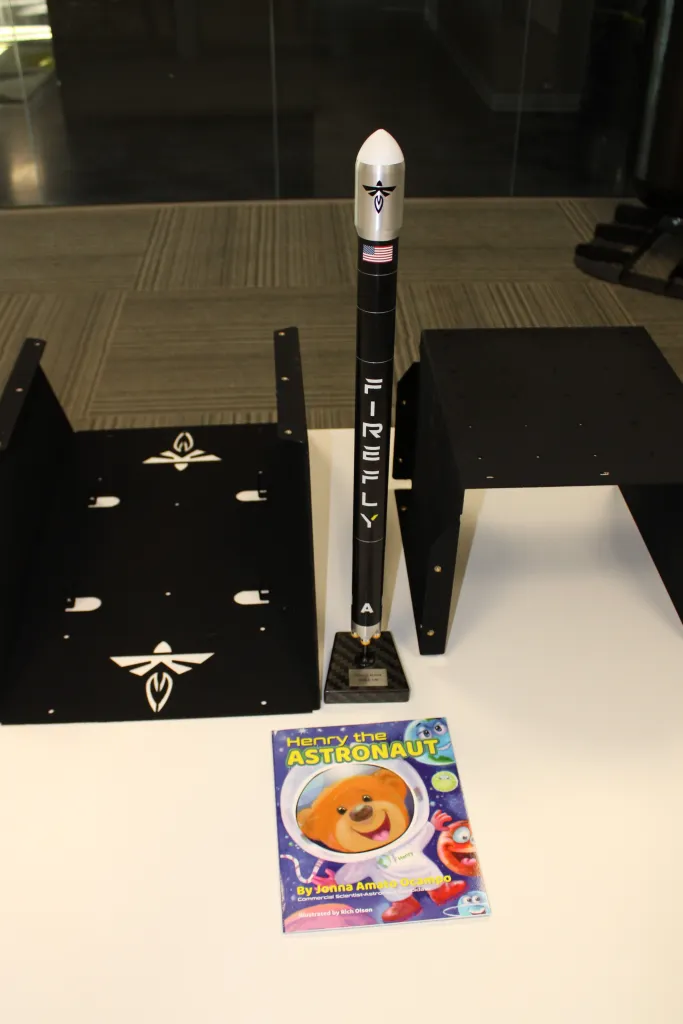
Better yet, these children will be reading a book that also went to space. Jonna said in an email to Everyday Astronaut, “…while this book will not return to Earth, readers will know that it has touched space and will remain amongst the stars forever”. Copies of the book will be available upon request when sending an inquiry here: [email protected].
Compound Derivative Series – Synthesis & Evaluation of Antimicrobials in Space or (CD-SEAS) is a non-profit organization which the author of Henry the Astronaut, Jonna Ocampo, founded. The CD-SEAS Mission Microgravity was formed as a biomedical research company. Their goal is to promote the discovery of scientific aspects through research. This research would be conducted both on Earth and in space.
LifeShip – DNA Samples
LifeShip is working to send DNA capsules to various corners of our solar system. This includes Earth orbit, the Moon, and the outer reaches. Sending individuals’ DNA as well as the DNA of plants, more people will be connected with space; and have a unique story to tell.
Firefly’s inaugural launch of Alpha will host the first flight for LifeShip in “Capsule 1”, as it has been dubbed. This particular flight will hold the DNA of 430 individual plants from all around the world. Plants come from North, Central, and South America, the Mediterranean, various parts of Africa from Kenya to South Africa, as well as New Zealand and Australia. Other DNA include native plants from islands such as Hawaii and the Canary Islands. In addition to international plants, LifeShip’s capsule also includes DNA from food that feeds humanity such as carrots, bananas, and apples.
Some of the plant DNA that will be flying on this mission are Coast redwood, California poppy, Hummingbird Sage, and the Joshua Tree, all from California. In addition to those, Capsule 1 will host the Bird of Paradise (South Africa), Needlewood (Himalayas), and Black Bamboo (China).
Excitingly, in addition to this first mission, “Capsule 1”, LifeShip already has plans to fly human DNA to the Moon on ULA’s Vulcan rocket. Founder and CEO of LifeShip, Ben Haldeman, said in an email to Everyday Astronaut, “LifeShip is now boarding passengers for future missions to the Moon. People can add their DNA to the genetic record of humanity”. If you would like to send your DNA to low Earth orbit or the Moon, you can apply here: https://lifeship.com/
Technical Payloads
Libre Space Foundation – PicoBus – Qubik-1/-2
Libre Space Foundation is a Greek non-profit organisation based in Athens, Greece focused on developing open source technologies for space, including the relatively new field of PocketQubes. PocketQubes, compared to CubeSats, are even smaller satellites where 1P satellites have a form factor of 5 cm x 5 cm x 5 cm and a maximum weight of 250 g. Their current solutions on the field of PocketQubes include among other things deployment, identification, tracking, and communication.
PicoBus is Libre Space’s open source PocketQube dispenser that can deploy up to eight PocketQubes. On this mission their dispenser will deploy a total of six PocketQubes, with two, Qubik-1 and Qubik-2, being their own test satellites. Both satellites are 1P PocketQubes with a mass of less than 250 g each. Qubik-1 and Qubik-2 have a lifespan of approximately three weeks on orbit.
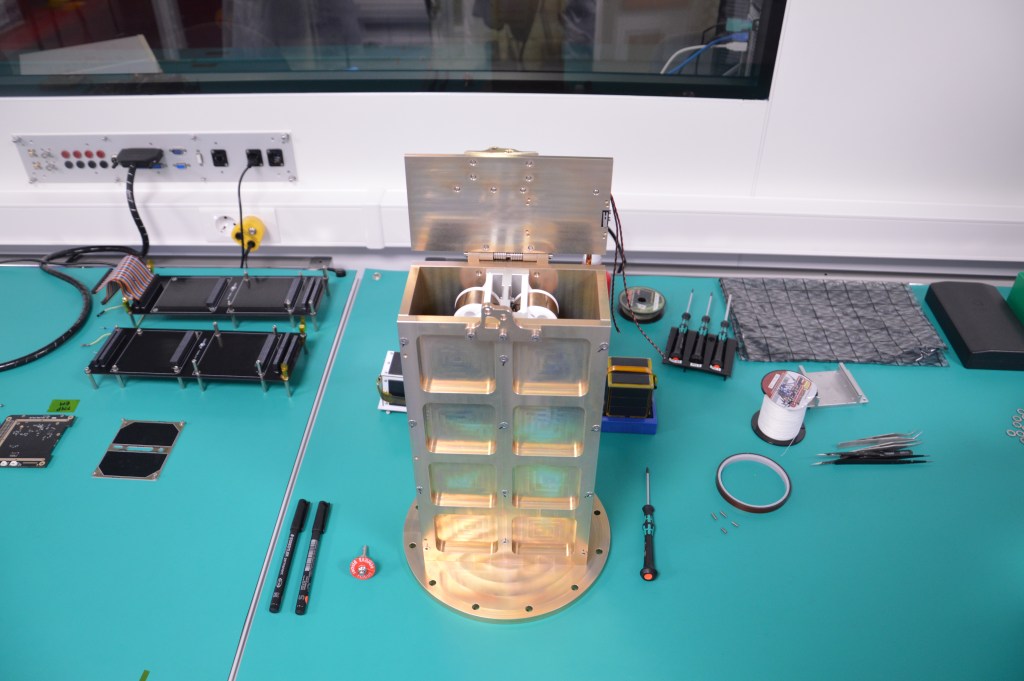
During this mission, the organisation will focus on the Launch and Early Operations Phase (LEOP), in which they will conduct their radio amateur experiments with their two test satellites. The LEOP is extremely crucial for most operations as operators often need to identify their satellites to establish communication and start operation. While this being relatively easy for dedicated missions or bigger satellites, it is way more complex for CubeSats and PocketQubes as they are often released in very close proximity to other satellites of those types. Furthermore, the often limited lifespan of those satellites makes it even more important to establish communications.
Qubik-1 and Qubik-2 will focus on exactly that problem and will conduct amateur radio communications, orbit determination, and satellite identification experiments by exploiting doppler variations in collaboration with the ground segment of the mission. The ground segment will receive data from the satellites with the help of the open source global network of satellite ground-stations called SatNOGS. Libre Space has developed a telecommunications solution called SatNOGS COMMS that is suitable for most small satellites and featuring tight integration with the SatNOGS network.

Everything developed at Libre Space Foundation is open-source and can be found and accessed on their GitLab page. In that spirit, the organisation plans on sharing all their scientific findings of their mission and has attached The Libre Space Manifesto that can be seen underneath on both satellites.
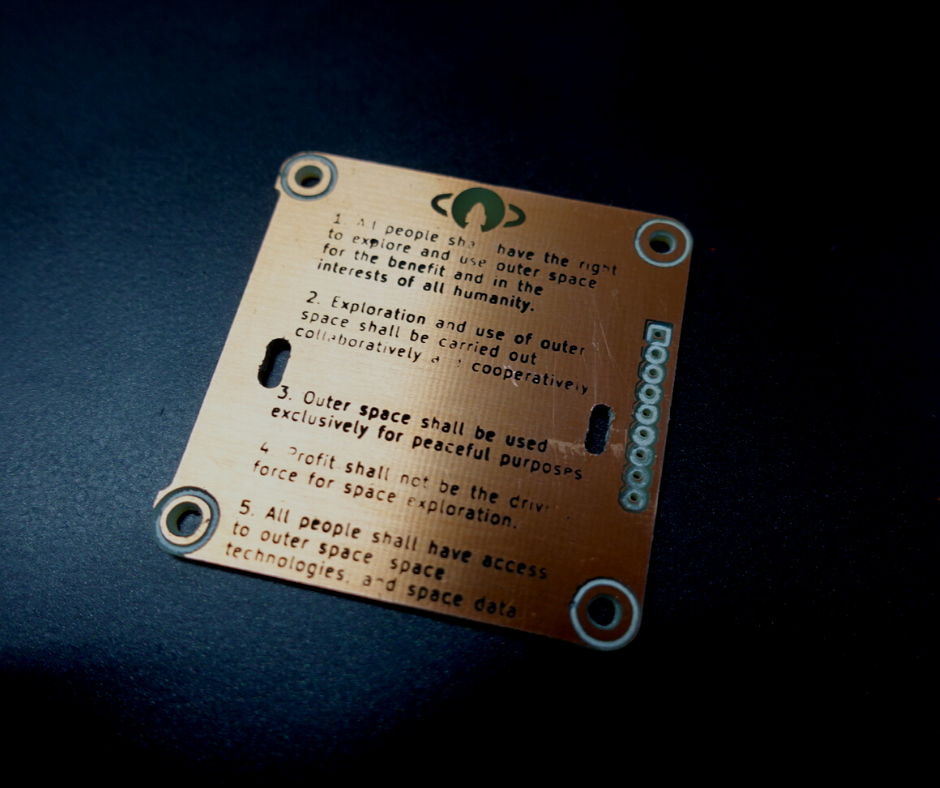
The four other satellites flying inside and being deployed by PicoBus are Fossa Systems’ 1P FossaSat-1b and 2P FossaSat-2, and AMSAT-EA’s 1.5P GENESIS-L and GENESIS-N. Their final testing and integration took place in October 2020 and was live-streamed by Libre Space on their YouTube channel.
FOSSA Systems – FossaSat-1b/2
FOSSA Systems is a company based in Spain creating so called PocketQubes (1P PocketQube is defined as 5 cm x 5 cm x 5 cm) for Internet of Things (IoT) and Earth observation (EO) use. On this mission, FOSSA Systems flies its 1P FossaSat-1b and 2P FossaSat-2 together with Libre Space Foundation. Both satellites will be deployed by Libre Space’s PicoBus dispenser.
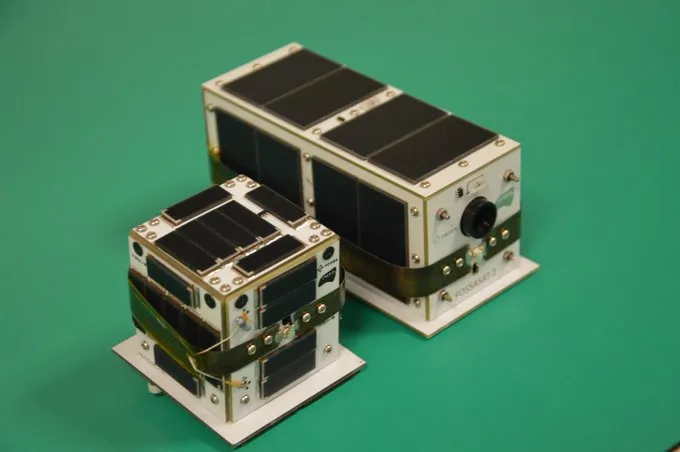
FossaSat-1b
FossaSat-1b is an upgraded version of the company’s first launched PocketQube called FossaSat-1. FossaSat-1 was successfully launched on Rockt Lab’s 10th mission Running Out Of Fingers and became the first PocketQube launched by Spain. Compared to FossaSat-1, FossaSat-1b doesn’t feature deployable solar panels, but overall upgraded systems.
FossaSat-2
FossaSat-2 is a test bed for FOSSA System’s future FossaSat-2 Evolved satellite. This 2P test satellite will feature several experimental instruments as well as novel EO payload. On board are a fully magnetorquer-based Attitude Determination and Control System (ADCS), and a Global Navigation Satellite System (GNSS) experiment supported by the ESA Galileo Science Office for studying PocketQube tracking in LEO. Furthermore, FossaSat-2 sports improved low powered LoRa IoT store & forward capability, Gaussian frequency-shift keying (GFSK), and Morse downlink.
AMSAT-EA – GENESIS-L/N
AMSAT-EA is a Spanish non-profit radio-amateur organisation founded in 2017 with the goal of enabling radio-amateurs to exchange digital messages over vast distances. AMSAT-EA has built two 1.5P (7.5 cm x 5 cm x 5 cm) PockeQubes called GENESIS-L (light) and GENESIS-N (normal). Students from the European University of Madrid and from the Higher Technical School of Engineering (ICAI) in Madrid have helped with mechanical, attitude and thermal design, and with parts of the communications system respectively.

The satellites are entirely made from COTS (commercial-off-the-shelf) parts and feature a 2 MHz CPU that will act as a low speed digital regenerative repeater to allow Morse code retransmissions between distant users. Furthermore, the satellites will emit beacons with several types of telemetry and 20 different morse code messages with greetings in Spanish and English.
GENESIS-L and GENESIS-N will both sport an experimental propulsion module. The AIS-gPPT3-1C thruster is a Micro Pulsed Plasma Thruster developed and manufactured by Applied Ion Systems. This thruster uses teflon as fuel, is designed to fire up to 500 pulses, and could raise the satellites’ orbits by up to nine meters in one month. The satellite’s flight computer will activate the thruster one week after launch and will fire it once every orbit until the fuel is depleted.
Hawaii Science and Technology Museum – Hiapo
The Hawaii Science and Technology Museum (HSTM) is an educational non-profit founded in 2015 dedicated to STEM (Science, Technology, Engineering, and Maths) education on the Island of Hawaii. HSTM visits various schools on Hawaii to bring exhibits directly to the students to inspire and spark their interest in STEM.
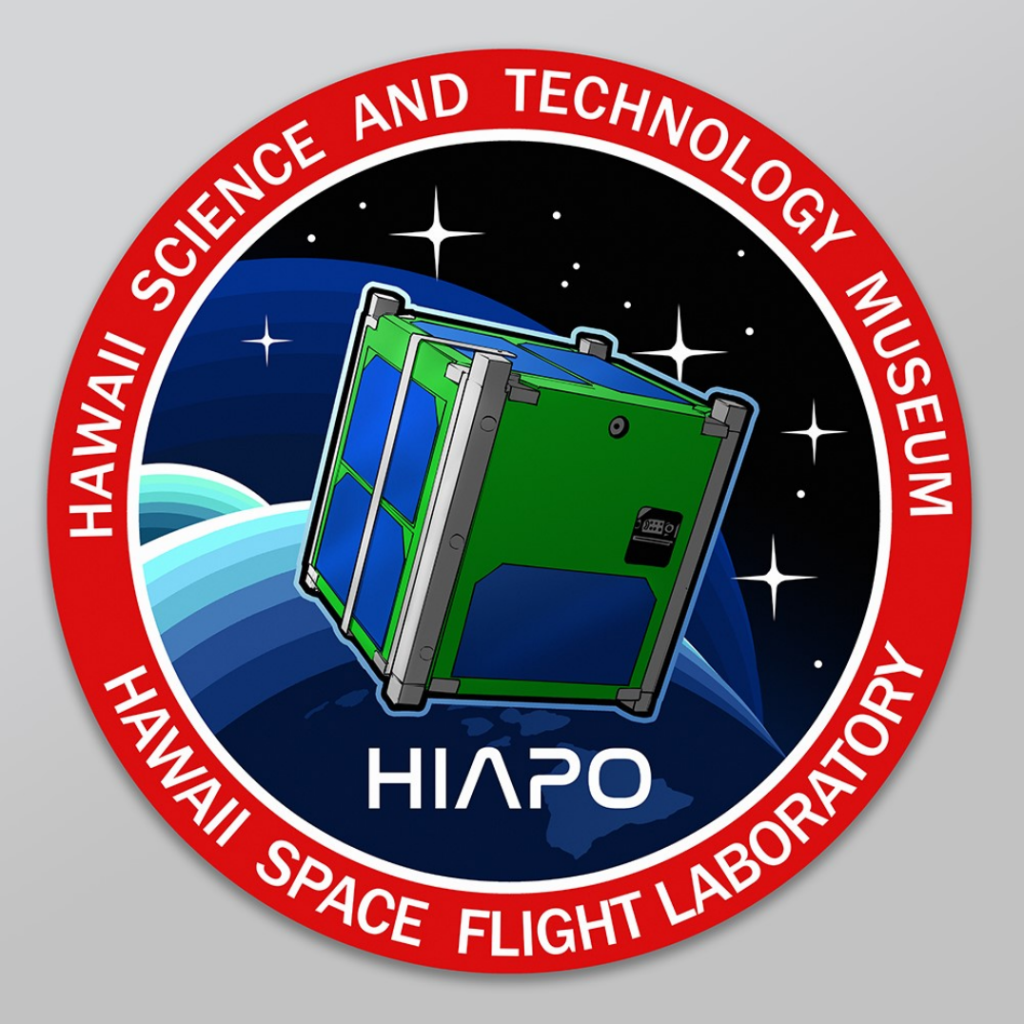
DREAM has allowed HTSM to explore the development of CubeSats resulting in Hiapo, Hawaii’s first – if successful – satellite to sustain extended orbit around Earth. Hiapo is a 1U (10 cm x 10 cm x 10cm) CubeSat equipped with a magnetometer to study Earth’s magnetic field in the thermosphere. It will also allow amateur radio enthusiasts to track it around the world.
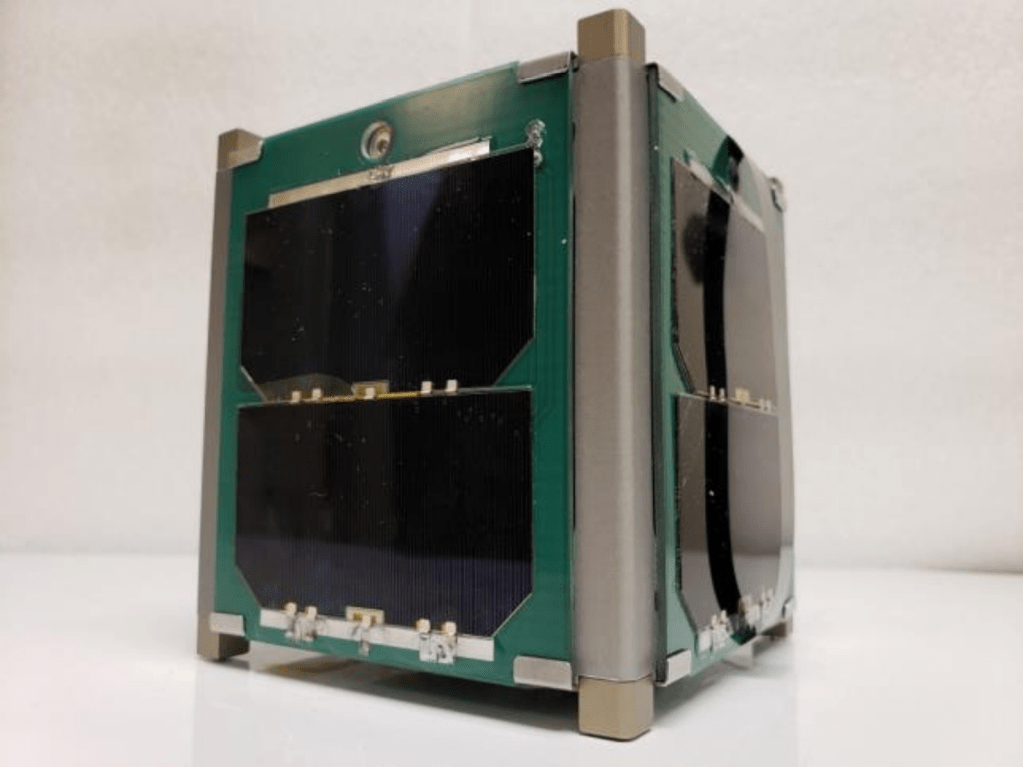
HSTM also plans to provide regular updates on Hiapo to schools on Hawaii, as well as non-aerospace grade CubeSats with functioning instruments for each elementary and middle school on Hawaii Island. That way HSTM hopes to sustainably spark the interest of students into STEM and open up space and space technology for students, as well as provide education on those topics.
Teachers in Space – Serenity
In 2009, Teachers in Space was founded by the Space Frontier. The commercialization of space was beginning to gain more speed, so the Foundation wanted to find a way to put teachers on suborbital flights. By doing this, they would be able to return to their kids and give them first hand accounts of what an experience like this was like.
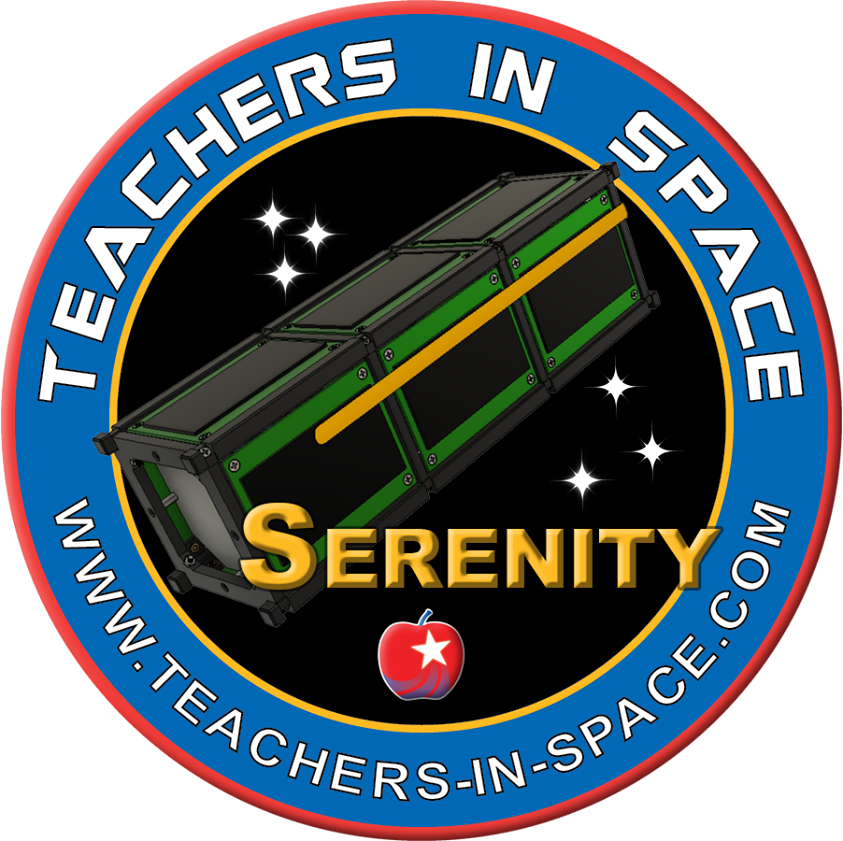
Originally, Teachers in Space were trying to get teachers to send in experiments to be tried on flights to space on various launch vehicles. In an interview with Everyday Astronaut, Elizabeth Kennick, President of Teachers in Space for over a decade, said, “We had only one person enter in our contest to send experiments to space”. Very little interest was able to be gained. That’s when Kennick turned to NASA, specifically the NASA Ames Research Center, which suggested trying balloon flights. “And they were absolutely right,” Kennick said.
Teachers in Space brought in a teacher from Columbus, Georgia, United States to help conduct the first balloon flight. This was a tremendous learning experience for them, which enabled them to do continuous balloon flights from then all the way to present day. The ultimate goal of Teachers in Space is to work to get teachers on a flight to space, but the steps taken here are necessary to achieve that goal.
Serenity
For this mission in particular, the Teachers in Space program will be sending a cubesat called Serenity on Firefly’s inaugural flight of their Alpha rocket. Serenity aims to provide educational resources to teachers and students around the world. After being placed in a low Earth orbit, Serenity will be activated and will start communications. It hosts a suite of data sensors and an Earth oriented camera. Anyone with a satellite receiver will be able to connect to Serenity. Teachers in Space suggest a local HAM radio club, which might have one. For more information, visit teachers-in-space.com.

As far as electronics on Serenity goes, Teachers in Space are using a simple Raspberry Pi, which anyone can buy and program themselves. The satellite is based on a 3U satellite bus and has radio transmission capabilities. Also on board are two Geiger counters, which measure and detect radioactive activity. These Geiger counters are identical with the exception of a fiber cloth to test its effectiveness as radiation shielding.
Another experiment is a blockchain experiment that will help to test the communications capabilities of the satellite with ground stations and with multiple satellites, once that becomes a possibility for Teacher in Space. Other typical instruments include GPS, a spectrometer, and a pressure sensor. All of these are simply on the satellite to see what data they can gather.
Furthermore, there is a camera mounted on Serenity, which will be fixed on Earth via a gyro control system. With a resolution of 126 meters per pixel, the camera will be able to produce images for Teachers in Space and others who want them. These images will not have a very high resolution, but will be a great first opportunity to see Earth from space. Anyone who is interested can request a place on Earth for a photo to be taken through the form on teachers-in-space.com.
Purdue University – Spinnaker-3
Spinnaker-3 is a collaboration between Purdue University, the Cal Poly CubeSat Lab and NASA. It is an 18 m2 dragsail that will passively help Alpha’s second stage to de-orbit quicker than without it.
Developed by Purdue University engineers, Spinnaker-3 will be the first dragsail big enough to de-orbit a second stage of a launch vehicle. Spinnaker-3 consists of three different sections:
- A 1U avionics box that will provide power and communications
- An 8U dragsail device that holds the deployment mechanism
- A 12U stilt system for raising the mechanism above other payloads
The 3 in Spinnaker-3 stands for its 3 m long SHEARLESS carbon fiber booms wrapped around a single hub. The dragsail itself is made from a shimmering translucent material, a fluorinated polyimide called CP-1, produced by NeXolve. This material is designed to withstand the degradation effect of monatomic oxygen in LEO. The 1U avionics box also features two small cameras that will transmit pictures of sail deployment back to Earth.
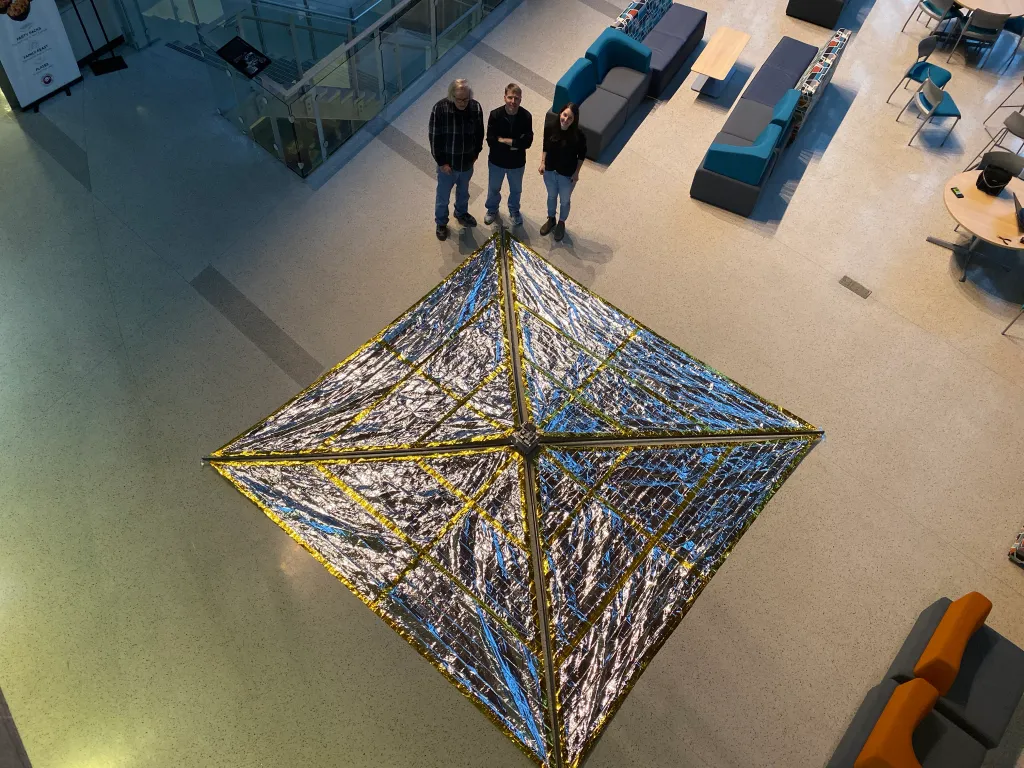
Launch vehicles usually de-orbit passively over long periods of times or actively by firing their engines, which requires additional fuel. That additional fuel has a negative effect on the vehicle’s payload capacity, which a dragsail like Spinnaker-3 could counteract. It is estimated that Alpha’s second stage would passively de-orbit after around 25 days. With Spinnaker-3, this time is cut down to only 15 days, creating a compromise between immediately de-orbiting a stage, but having to carry the fuel required for that, and letting a spent stage slowly de-orbit over time, contributing to the problem of space debris.
Spinnaker-3 is a prototype for a product line currently being developed by the startup company Vestigo Aerospace LLC. Those dragsails will enable bigger payloads or spent rocket stages to rapidly de-orbit, decreasing the risk of on-orbit collisions. The company also offers smaller dragsails for CubeSats.
As this technology sounds promising for future missions, NASA has taken an interest in the project and recently awarded a two-year Phase II Small Business Innovation Research (SBIR) investigation to advance drag sail technology.
Test Article For Firefly’s SUV
On board of this first flight of Alpha is a test article for Firefly’s upcoming Space Utility Vehicle (SUV). The ST-25 Hall-Effect Thruster from Space Electric Thrusters Systems is an ion thruster. The ST-25 differs from other thrusters of that type as it utilizes a permanent magnet instead of more commonly used electromagnet. This results in a lower power consumption, which increases overall efficiency.
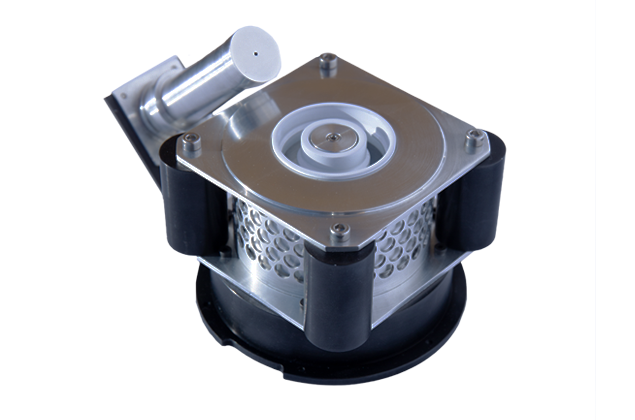
| Thrust | 5-11 mN |
| Specific impulse | 1200 s |
| Input power | 100-180 W |
| Efficiency | 30% |

Firefly’s SUV plans to make use of high-performance solar electric propulsion. It will open up orbits for payloads that small launch vehicles could not reach on their own. The SUV can provide a variety of services to small CubeSats, to dedicated missions and whole constellations. Future potential applications are:
- Deploy entire constellations or multiple payloads into unique orbits
- Reach altitudes and inclinations out of range of a launch vehicle
- Sustain super low altitude flight as low as 250 km
- Provide a host platform for payloads requiring propulsion, power, and downlink
- Tune orbits for launch vehicles using solid rocket motors
Commercial Payload – Benchmark Space Systems
Next to the DREAM payloads, there is also one commercial payload flying on Alpha’s inaugural flight. Benchmark Space Systems’ BSS-1. BSS-1 is a 3U tech-demonstrator CubeSat based on NearSpace Launch, Inc.’s 3U-FastBus satellite bus. This satellite bus includes:
- EyeStar-S3 Simplex Comm System
- Live data access through an NSL Console
- Fixed Solar Arrays
- Smart EPS and Batteries
- Flight Processor
- Gold Anodized Structure, including: chassis, access panels, end plates, optical bench, hardware
- Inhibit Switches
- Harnessing for NSL systems

Benchmark Space Systems develops propulsion systems for satellites ranging from 1U up to the ESPA class (1 kg to 500 kg). Launching on this mission is their smallest warm-gas propulsion system called Starling. It is designed to be scalable and used on 3U to 24U CubeSats featuring the company’s On-Demand Pressurisation System (ODPSTM). This ODPSTM pressurises the propellant once it is needed to perform maneuvers, making the satellite and the propulsion system safer to handle during integration and during launch. Starling itself can come in a form factor of 0.5U up to 2U and is fueled by an inert, non-toxic powder that provides thrust levels from 0.01 N up to 1 N, enabling small CubeSats to perform on-orbit maneuvers.
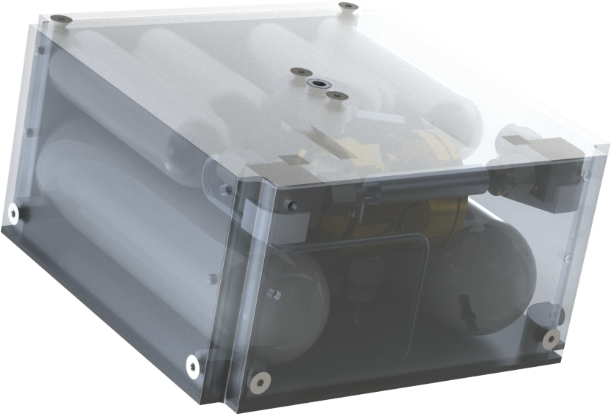
Starling is one of currently three propulsion systems that are being developed by Benchmark Space Systems, with the other two systems targeted for bigger CubeSats and ESPA class satellites.
Mission Profile
Launch day begins with final pad checkouts eight hours prior to launch. For the next two hours, Firefly powers up Alpha and does some sensor checks before beginning to load helium, fuel, LOx at T-06:00:00, at T-05:15:00, and at T-03:40:00 respectively. Alpha enters terminal count 20 minutes before lift off and ignites its first stage engines about two seconds before the hold-down clamps release the rocket into the sky.
Shortly after lift off, Alpha will fly north-west heading at a 138° inclination. About a minute after launch the vehicle is supersonic breaking the sound barrier, and experiences MaxQ only seconds later at T+00:01:16. MaxQ stands for maximum aerodynamic pressure and signifies the point in the vehicles’ trajectory, in which the combination of the density of Earth’s atmosphere and the vehicle’s speed create the most stress on the vehicles’ structure.
Stage 1 and stage 2 will separate at T+02:50 after the 4 Reaver engines on Alpha’s first stage have depleted all the propellant. The second stage engine will ignite shortly after the two stages have separated. Next up is fairing jettison, which occurs at T+00:03:13.
The second stage burns for approximately five minutes after which it will shut down and payload deployment will begin. After all payloads have been separated, Alpha will perform a second burn lasting only 2 s to demonstrate on orbit relighting capability of their second stage engine Lightning. That 2 s burn will change the vehicle’s inclination from 137° to 137.5°. After Alpha’s job is done, the Spinnaker-3 payload, a deployable 18 m2 dragsail, will deploy. It is designed to drastically decrease the time to passively de-orbit spent rocket stages and will help de-orbiting Alpha’s second stage in only 15 days compared to 25 days without Spinnaker-3.
Mission Timeline
| HH:MM:SS From Lift Off | Events |
|---|---|
| T-08:00:00 | Final Pad Checkouts |
| T-07:00:00 | Power Up of Alpha |
| T-06:50:00 | Sensor Checks |
| T-06:00:00 | Helium Load Begins |
| T-05:15:00 | Fuel Load Begins |
| T-04:30:00 | Pad Clear |
| T-03:40:00 | LOx Load Begins |
| T-00:20:00 | Terminal Count |
| T-00:00:01.79 | Ignition of Stage 1 |
| T+-00:00:00 | Lift Off! |
| T+00:01:07 | Mach 1 |
| T+00:01:16 | Maximum Aerodynamic Pressure (MaxQ) |
| T+00:02:47 | Main Engine Cut Off (MECO) |
| T+00:02:50 | Stage Separation |
| T+00:02:53 | Stage 2 Ignition |
| T+00:03:13 | Fairing Jettison |
| T+00:08:46 | Second Engine Cut Off 1 (SECO 1) |
| T+00:14:13 | Payload Deploy |
| T+00:54:08 | Stage 2 Relight |
| T+00:54:10 | SECO 2 |
| T+01:44:00 | Passivation |
Alpha
Alpha is a small lift launch vehicle developed and built by Firefly Aerospace. With a payload capacity of 1,000 kg and 630 kg to a 200 km LEO at 28.5° inclination and a 500 km SSO, respectively, Alpha is one of the biggest small lift launch vehicles. It is a two stage liquid fueled Rocket utilizing highly refined kerosene (RP-1) and liquid oxygen (LOx) as fuel and oxidizer, respectively. Alpha stands a total of 29.75 m (~97.6 ft) tall while being 1.8 m (~71 in) in diameter with a 2 m (~79 in) fairing. The rocket is entirely made from advanced carbon-fiber composite, which results in a lighter, but still strong vehicle, able to lift more payload than comparable rockets made from metal.
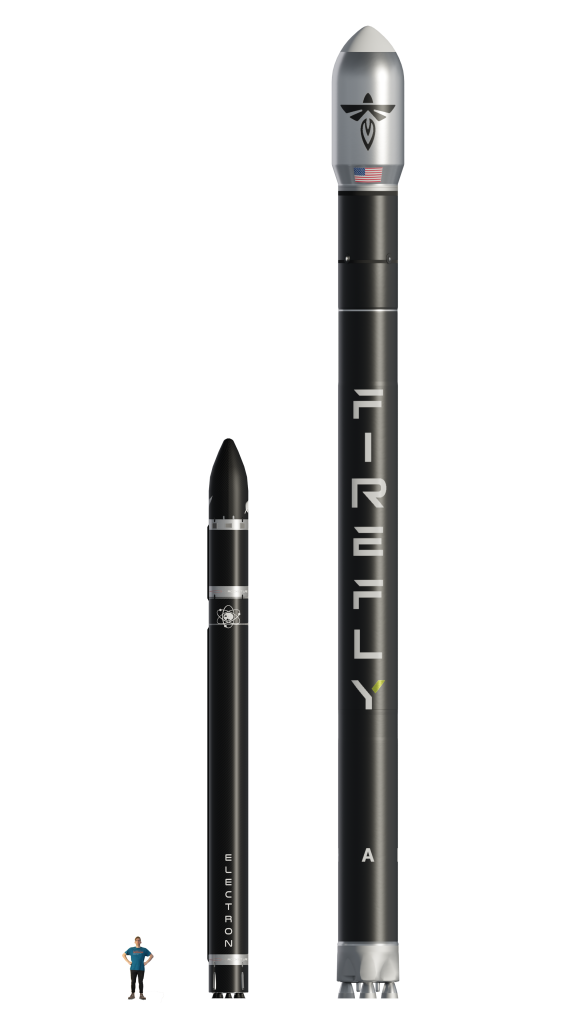
Stage 1
Alpha’s first stage is powered by 4x Reaver 1 engines producing a total of 736.1 kN (~165,000 lbf) at lift off. The Reaver 1 engine is a “simple” combustion tap-off cycle engine where hot exhaust gasses are driving a single-shaft turbo pump, which feeds the engine with propellants. This makes the engine relatively simple, but also complicated to start. During this complicated start up procedure, Firefly uses TEA-TEB as an ignition ignition fluid, which causes the green flame at ignition. This will be the first time that a tap-off cycle engine will fly on an orbital class rocket. Up until now there has only been Blue Origin’s BE-3 engine as another tap-off cycle engine that has been flown on a vehicle.
Each Reaver engine produces ~184 kN of thrust at a specific impulse (ISP) of 298 seconds. Furthermore, each engine features single axis gimballing resulting in pitch, yaw and roll control when all four engines are combined.

Stage 2
The second stage is powered by only 1x Lightning 1 engine producing 75.6 kN at an ISP of 324 seconds. Furthermore, the engine’s nozzle extension gets cooled by the exhaust gas of the turbopump. Just like Reaver, Lightning is also a tap-off cycle engine and uses the same TEA-TEB as its ignition fluid.
Special Looks
Alpha is rather special among other rockets as it sports a unique paint job. At the base of the rocket you can see a phoenix rising out of the flames of the engines, which represent Firefly’s eventful journey through bankruptcy, restart and incredible growth, to where they are today – at the launch pad! It is unclear yet if future Alpha rockets will sport the same livery.






Thanks so much for this coverage.
-Correll
Let’s not forget those famous words,
“Failure is not an option”
Let’s nail it next time Firefly.